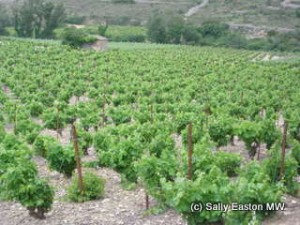Vin de France – the new kid on the block?
A version of this article first appeared in Australia’s Winestate magazine in July/August 2010.
There’s excitement in France at the new Vin de France category, in effect from the 2009 vintage, which means wines started coming on the market about six months ago.

South of France vineyards
The new category has been created as a result of massive wine sector reform in the European Union, which is seeing large-scale voluntary uprooting, and the phasing out of subsidy support mechanisms which have contributed to overproduction.
In France, underneath the Appellation d’Origine Contrôlée wines (which are to become Appellation d’Origine Protégée) and Vin de Pays (which are to become Indication Géographique Protégée) lies basic table wine. Until the 2009 vintage, table wine could give no details of its grape variety composition or its year of harvest, which it has been argued, makes it difficult to create and market strong wine brands effectively. Thanks to the innovative marketing techniques of the new world in the 1980s and 1990s, many of the wine world’s consumers buy their wines by grape variety rather than appellation such as Bordeaux, Burgundy, Côtes du Rhône or Ribera del Duero.
The new category is a major change at the price-fighting end of French production. Not only can grape varieties and vintage be incorporated as part of the label and brand proposition, but blends can be put together from a mix of French regions (and the same rules apply in other European Union countries). Chris Skyrme, who represents the organisation promoting the new Vin de France, said producers using “sauvignon blanc have already taken advantage of inter-regional blending” adding the new Vin de France category “has a level of flexibility which new world countries have had forever, and there is more competitivity, which needs to happen at this quality/price level.”
He added “the category will help build and promote brands in France.” If France is to compete against strong new world brands, it certainly needs such extra flexibility and labelling possibility.
One of those sauvignon blanc producers whose already taken advantage of the inter-regional blending opportunity is Lacheteau in France’s Loire Valley, which produces a wine called Kiwi Cuvée, so named because a New Zealand winemaker put the original blend together from Loire fruit. The brand has been around for about a decade. Tim North, the managing director of the brand’s owner, Les Grands Chais de France, said the new Vin de France category has given them “the ability to produce better blends that are more consistent vintage after vintage. Some years in the Loire it’s a bit lean, we can blend in fruit from Gascony [in south west France] or even from the south in some years, and make better quality.”
He added “for commercial brands it’s a real opportunity to improve quality and do exactly what Australia has been doing with ‘South East Australia’ for several decades. At the volume branded level it gives us a more level playing field with the likes of Australia.”



